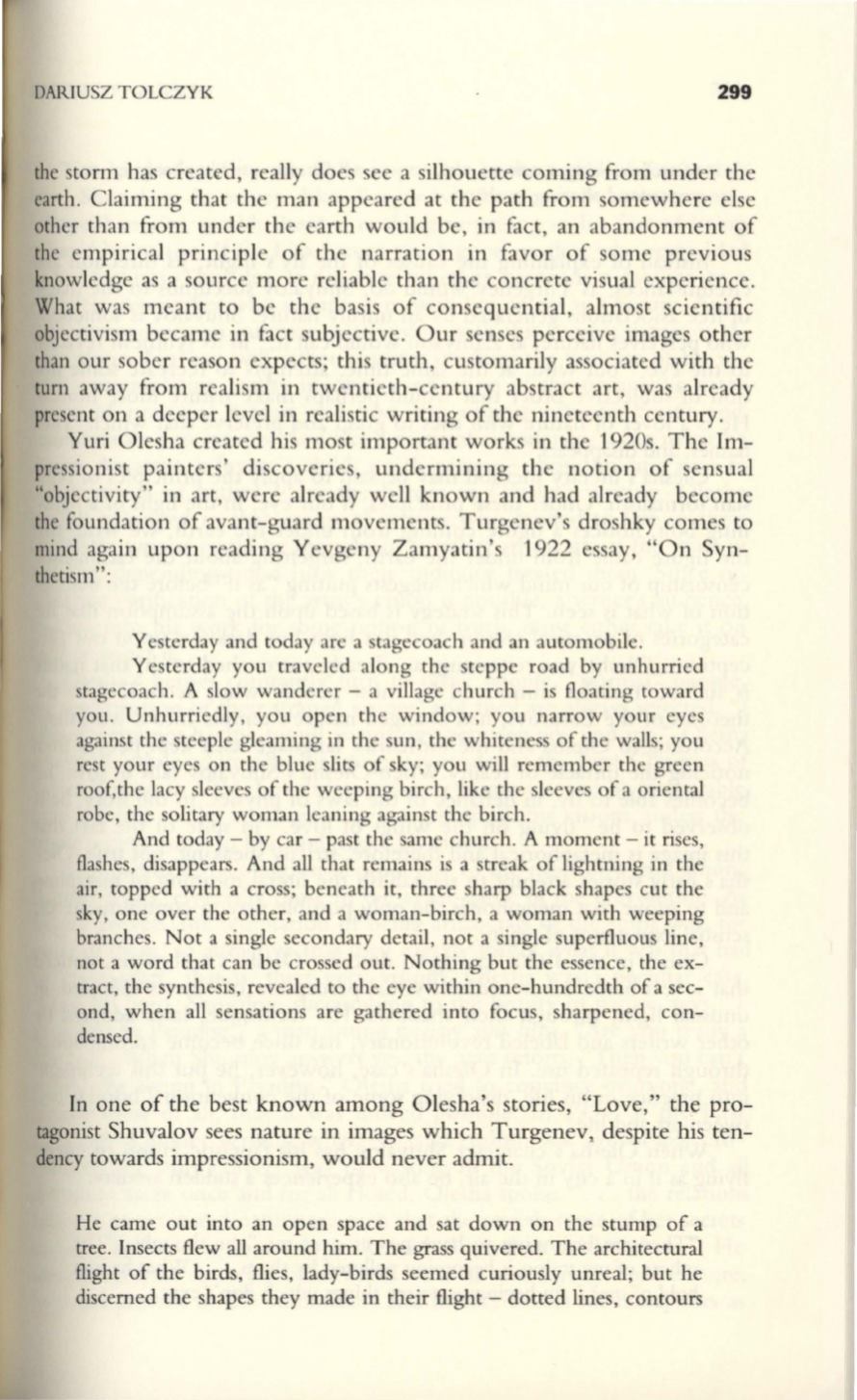
DARIUSZ TOLCZYK
299
the storm has created, really does see a silhouette coming from under the
earth. Claiming that the man appeared at the path from somewhere else
other than from under the earth would be, in fact, an abandonment of
the empirical principle of the narration in favor of some previous
knowledge as a source more reliable than the concrete visual experience.
What was meant to be the basis of consequential, almost scientific
objectivism became in fact subjective. Our senses perceive images other
than our sober reason expects; this truth, customarily associated with the
tum away from realism in twentieth-century abstract art, was already
present on a deeper level in realistic writing of the nineteenth century.
y
uri Olesha created his most important works in the 1920s. The Im–
pressionist painters' discoveries, undermining the notion of sensual
"objectivity" in art, were already well known and had already become
the foundation of avant-guard movements. Turgenev's droshky comes to
mind again upon reading Yevgeny Zamyatin's 1922 essay, "On Syn–
thetism":
Yesterday and today are a stagecoach and an automobile.
Yesterday you traveled along the steppe road by unhurried
stagecoach. A slow wanderer - a village church - is floating toward
you. Unhurriedly, you open the window; you narrow your eyes
against the steeple gleaming in the sun, the whiteness of the walls; you
rest your eyes on the blue slits of sky; you will remember the green
roof,the lacy sleeves of the weeping birch , like the sleeves of a oriental
robe, the solitary woman leaning against the birch.
And today - by car - past the same church. A moment - it rises,
flashes, disappears. And all that remains is a streak of lightning in the
air, topped with a cross; beneath it, three sharp black shapes cut the
sky, one over the other, and a woman-birch, a woman with weeping
branches. Not a single secondary detail, not a single superfluous line,
not a word that can be crossed out. Nothing but the essence, the ex–
tract, the synthesis, revealed to the eye within one-hundredth of a sec–
ond, when all sensations are gathered into focus, sharpened, con–
densed.
In one of the best known among Olesha's stories, "Love," the pro–
tagonist Shuvalov sees nature in images which Turgenev, despite his ten–
dency towards impressionism, would never admit.
He came out into an open space and sat down on the stump of a
tree. Insects flew
all
around him. The grass quivered. The architectural
flight of the birds, flies, lady-birds seemed curiously unreal; but he
discerned the shapes they made in their flight - dotted lines, contours


